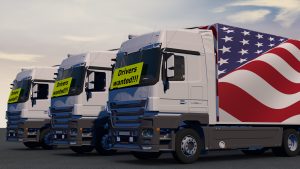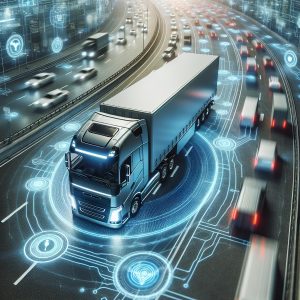The trucking industry plays a vital role in moving goods across the globe, with the U.S. trucking sector alone responsible for transporting over 70% of all freight tonnage. As we look ahead to 2025, several emerging trends will continue to reshape the industry. In this article, we’ll dive into the most important data and trends that trucking and logistics professionals need to be aware of to stay ahead of the curve.




Table of Contents
Toggle1. The Growing Demand for Trucking Services
As e-commerce continues to drive the global economy, demand for trucking services is expected to rise sharply. Throughout 2025, freight volume is projected to increase by nearly 2% and estimated 30% over the next decade, with last-mile delivery playing a big role in meeting consumer expectations.
- Stat: According to the American Trucking Associations (ATA), the trucking industry is expected to move over 14 billion tons of freight by 2035 compared to current volume at around 11.27 billion tons.
- Why it matters: As consumer demand for fast and reliable delivery continues to grow, trucking companies will need to expand their fleets, improve routing efficiency, and adopt technology to meet expectations. For businesses in the trucking space, this translates to more opportunities, but also more competition.
2. The Truck Driver Shortage Crisis Continues
One of the most significant challenges the trucking industry faces today is the shortage of qualified truck drivers. The American Trucking Associations reports that there is currently a shortfall of over 60,000 drivers, a figure that is expected to grow by more than 100,000 over the next few years.
- Stat: The average age of a truck driver in the U.S. is 46 years old, and nearly 25% of Semi- Truck drivers in workforce are expected to retire over the next 5 years.
- Why it matters: Companies in the trucking sector will need to ramp up recruitment efforts, offer competitive salaries, and consider implementing innovative solutions such as autonomous vehicles or AI-driven route optimization to address this gap.
3. Technological Advances in the Trucking Industry
Without a doubt, tech is poised this year to revolutionize the trucking industry, especially in the areas of automation and artificial intelligence (AI). Autonomous trucks, AI for route planning, and electric vehicles (EVs) will play a major role in shaping the future of the industry.
- Stat: According to a report by McKinsey & Company, 20-25% of freight could be moved by autonomous trucks by 2030, potentially saving billions in operating costs.
- Why it matters: As autonomous trucking technology matures, the potential for reduced operational costs, enhanced safety, and improved fuel efficiency becomes increasingly attractive to logistics companies. Moreover, AI tools for route optimization are already helping companies reduce fuel consumption and improve delivery times.
4. Fuel Prices and Its Impact on Trucking Costs
The cost of fuel remains one of the biggest challenges for the trucking industry. With global fuel prices fluctuating, the financial impact on trucking companies is significant, especially as freight volumes rise.- Stat: According to FreightWaves, fuel costs account for nearly 25% of total operating expenses for trucking companies. Increases in fuel prices can lead to higher shipping costs and reduced profit margins.
- Why it matters: With the unpredictable nature of fuel prices, companies must find ways to reduce their fuel consumption through more efficient vehicle technologies, route optimization, and alternative fuel sources like natural gas or electric trucks.
5. Environmental and Sustainability Regulations
As the push for sustainability intensifies, trucking companies are under increasing pressure to reduce their carbon footprints. Regulations and consumer demand are driving the adoption of green technologies and eco-friendly practices across the industry.- Stat: BY 2030, it’s expected that 30% of new trucks will be electric, according to the International Energy Agency (IEA).
- Why it matters: Staying compliant with environmental regulations and adopting clean technologies not only helps businesses avoid fines but can also attract environmentally conscious clients. Transitioning to electric trucks or adopting fuel-efficient fleets will be key strategies for success in the coming years.

6. The Rise of E-commerce and Last-Mile Delivery
The explosive growth of e-commerce is having a transformative effect on the trucking industry, particularly when it comes to last-mile delivery. As consumers demand faster shipping times and greater convenience, trucking companies must adapt to meet these needs.- Stat: it is projected that over 20% of all freight will be related to e-commerce deliveries within the next few years. This shift is expected to increase the need for more localized and agile fleets, particularly in urban areas.
- Why it matters: The growing demand for same-day and next-day deliveries requires trucking companies to rethink their logistics strategies. Investing in more localized distribution centers, using AI-powered route planning, and optimizing warehouse operations will be crucial for success in the last-mile delivery sector.